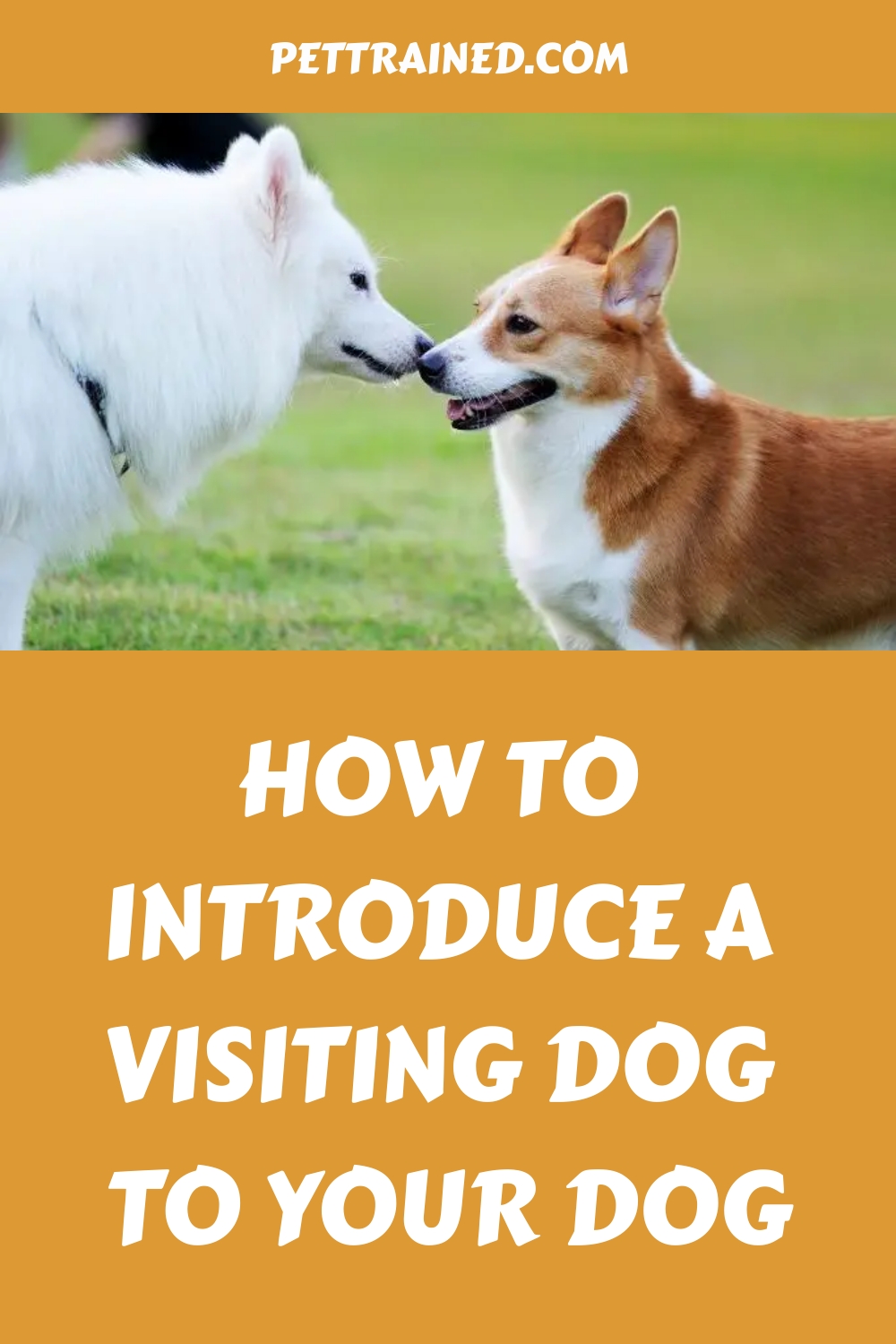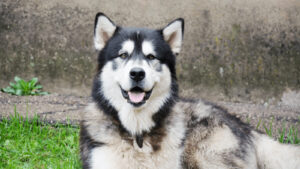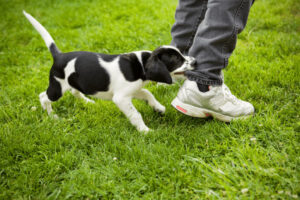Do you have a friend coming over with a dog? You will need to understand how to introduce a visiting dog to your dog. A proper introduction is a necessary step before you allow the dogs to spend some time together. Even though you will be introducing your pet to a potential friend, he’ll see the visiting dog as a stranger and may become aggressive. Therefore, we will show you how to introduce two dogs the right way in this post.
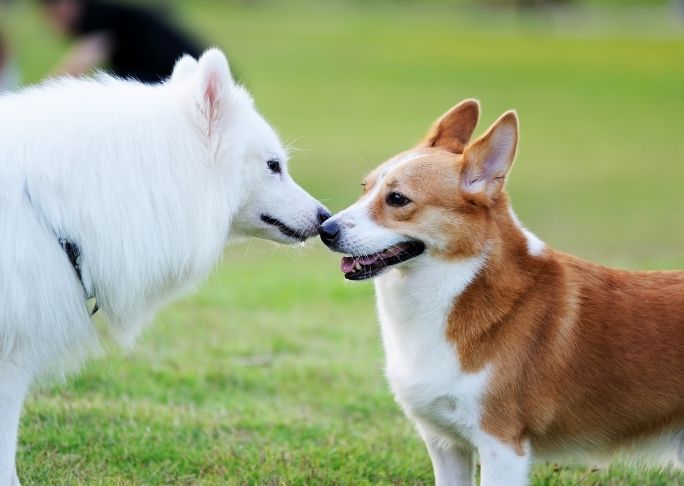
You will need to follow the proper dog introduction procedure for the first meeting. You must get this right, so both dogs get along smoothly. Following the tips below for better results;
Table of Contents
1. Communicate Before The Meeting
You need to discuss the needs of both dogs before the meeting and plan accordingly for meals, drugs, dog toys, dog beds, and any other items the dog will need. It is best to bring your dog’s items along with you to make your dog more comfortable in the new environment.
Preparing beforehand will ensure that nothing gets forgotten and prevent last-minute trips to the pet store.
A visiting dog will feel afraid if left alone with strangers and a strange dog. Leaving a dog alone could lead to dog whining and other separation anxiety behavior. See our post on how to stop dog separation anxiety effectively if you need help with that.
Also, proper preparation for meals will ensure you feed your pets the right meals, as some human foods can be dangerous to dogs. See a list of holiday foods that are dangerous to pets here.
2. Exercise The Dogs Before The Meeting
Dogs can be very agitated during a meeting with a new dog. The more energy they have to spend, the more likely they are to get into physical fights. It’s best to use some of that energy by taking your dog running or walking with you. See our post on how to train a dog to run with you if you need some tips to get started.
Ensure you do this in the morning before the meet or the afternoon before if you plan to do the introductions later in the day. Going outdoors not an option? See our rainy games to play with a dog post to see some indoor games you can play with a dog to help tire out your dog.
3. Pick A Neutral Meeting Place
Where the two dogs meet is vital if they are to get along. You should pick a neutral place, somewhere where neither dog will feel like it’s their territory.
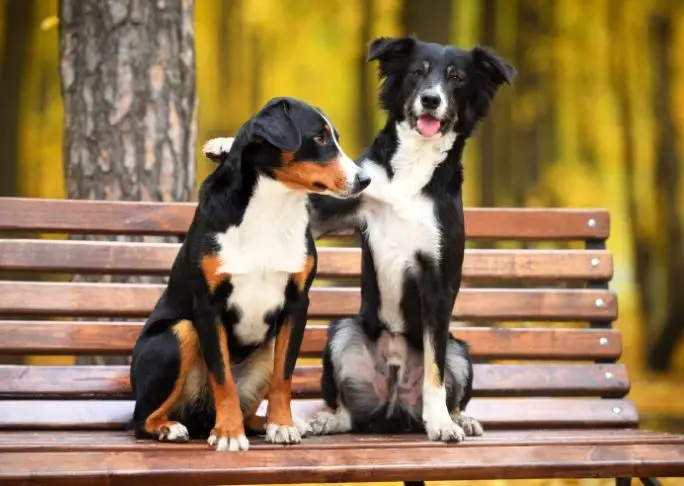
If the friend is coming to your home, don’t introduce the visiting dog in your pets’ room; else, he’ll perceive the other dog as an intruder. In such a situation, you could experience territorial aggression in dogs.
An ideal place would be outside your house, possibly along the street, a dog park, or your neighbor’s backyard. If they must meet indoors, pick a room in your house where your pet isn’t accustomed to. Not somewhere he hates but somewhere he doesn’t enter often.
4. Remove Possible Triggers
It’s easy for dogs to fight over things they like. They include stuff like dog food, dog treats, dog toys, and even attention. So you don’t distract any of them or make them feel entitled. Their meeting point should be void of these triggers.
You shouldn’t show too much attention to the visiting dog, so your pet doesn’t feel jealous, and your friend shouldn’t do the same for your pet. At that point, you’re both to remain neutral.
5. Lead The Pets
You’ll make a mistake if you let both pets run towards each other freely. Allowing your dogs to meet each other freely would make them feel they can do whatever they like.
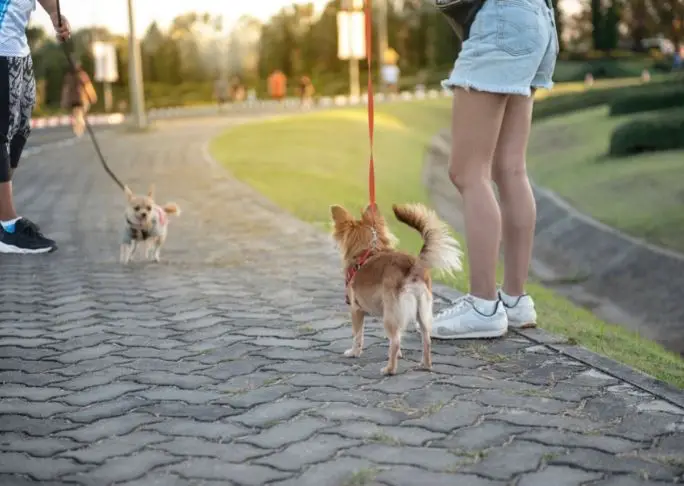
Therefore, they both should be led, best with a leash, as they get introduced. That way, they know you are around them, in control, and that they are safe.
As mentioned, using leashes put you both in control. If you introduce them and they start acting negatively or aggressively, you can quickly restrain them.
Neither you nor your friend should attempt to hold both leashes at the same time. It is best to walk both dogs side by side, with each of you holding a leash.
6. Watch Their Body Language
The body language of your dog and the visiting dog will show you if you’re making progress. It’ll help you know if you should keep up what you’re doing or try something different.
Some signs of positive body language you should look out for includes a relaxed facial expression, upright tails, play bows, and fast tail wagging.
On the other hand, some negative body language you should look out for include tensed facial expression, neck & back hair standing, barking, growling, and tails in between legs.
If they are getting along well, you can ease up a bit and let them spend more time with themselves. If your dogs are not getting along, it may be best to withdraw both dogs and try the meeting some other time.
7. Take The Dogs on A Walk to Interact And Bond
Once the first phase of the introductions is complete, it’s best to take the dogs on a walk together. This
will allow a bit more time for them to sniff each other and get a bit more comfortable together.
The dogs should be walked together, heading to the same location but have at least thirty to sixty feet of space between them.
As you walk, gradually close the distance between the dogs if no issues and disagreements come up.
Trending in Dogs:
By the time you are almost home, allow them to walk side by side so that your dog does not feel the visiting dog is charging into her home.
The time spent together walking will also help reduce territory markings in the house when you finally return home. If the dogs still urinate in places they shouldn’t, you should clean up quickly and see this post for tips on how to remove dog urine smell in the house.
8. Continue Supervising Them During The Meeting
Once both pets have gotten along, you can unleash them and let them play together indoors or in enclosed areas with toys, etc.
What you should never do, however, is to leave them both unsupervised. Your dogs might have gotten along pretty well so far, but there’s no telling what could happen next.
If it’s just a regular visit, say for a few hours or a longer visit of weeks, it’s still important to supervise, but the level of supervision will naturally decrease with the more time spent together.
9. Feed Them Separately
If the visiting dog is to be around for a long time, say weeks or months, it could take quite some time for both dogs to relax completely and fully trust each other. In the meantime, it’s just best to feed them separately in the beginning.
The dogs will need to eat in separate rooms. Separation at mealtimes will reduce any potential fights over food. After a while, this won’t be necessary anymore as If they get along very well, you can now let them eat and play together off-leash.
Other Considerations
These tips on how to introduce a visiting dog to your dog will greatly help make the meeting a success. However, other considerations may make or break your introduction, which in some cases may be beyond your control.

Personality Of The Dogs
it’s important to note that how your pet receives other pets is also due to his personality. For example, if your pet is shy, it might be difficult for him to get along with other pets, amongst other things. According to various experts, shyness can be caused by their previous experiences, so he might have had bad experiences as a puppy if you adopted an adult dog. These problems may be more difficult to solve now he is an adult.
Age Differences / Energy Levels
Another important consideration on how to introduce two dogs the right way is the energy level or age differences between the dogs. If you bring a high energy dog to a low energy dog or introduce an older dog to a younger dog and they seem to be having fun together, you need to observe and monitor the play sessions cause the older dog may get tired quicker and start getting angry at the constant disturbance from the younger dog to play.
Once you notice this is becoming an issue, it’s best to relocate the smaller dog so the older one can relax for a bit. You can use a dog crate temporarily if you don’t have another secure location. Ensure you put your dog’s toys into the crate as well. If you do not have a crate yet, see our list of the best dog crates for dogs with separation anxiety here.
Socialization Levels As Puppies
If your pet was not properly socialized as a puppy to learn how to behave around other dogs, your dog may have problems with other dogs and pick fights a lot.
If your dog is still young, ensure you get him socialized. Socialization classes help a dog behave better in so many ways. Be sure to take him to a dog socialization class if you can but don’t make the mistake of restricting it to just his breed; he needs to learn how to mix with other dogs too.
Space Considerations
A bigger home will be more conducive to having different dogs from different owners. It will be easier to separate dogs when required, feed in different locations, etc. If you live in a tiny flat, you will need to consider this before inviting the visiting dog over.
Potty Needs
For items such as where to eat and sleep, your visiting dog will most likely follow the residents’ dog’s direction. However, when it comes to where to potty, that is a different case entirely; you need to specifically show your dog where to do his business or risk accidents around the house.
We advise you to take your dog out or to the potty location every one to three hours to potty. It would help if you used whatever potty command your dog is familiar with to encourage your pet to do the deed at the specified location and reward your dog afterward. If you need help with this, see our post on how to potty train a puppy in an apartment fast.
Removal of Hazards
Your new dog will not be familiar with the environment. So it’s best to double-check and ensure all hazards are removed from the home and ensure the area is safe and void of harmful objects. See our post on holiday safety tips for pets for a checklist of common items that may injure pets that you need to put away to ensure your pets stay safe. The meeting would be a failure if any of the two pets were to pick up an injury.
See A Dog Introduction In Action
Be sure to watch this video with more tips on how to introduce your dog to another dog. It features two German Shepherds who have never met before.
Final Notes
We hope you have learned something useful in this post about how to introduce two dogs the right way. Ensure you communicate your plans and exercise the dogs beforehand, take care that the introduction happens in a neutral location, make sure the location is free from items that could cause conflict between both pets, ensure both dogs are leashed, monitor the body language of the dogs, closely supervise the meeting to pick up signs of aggression to quickly prevent any dog fights and ensure you’ve properly taken the other considerations into account.
Please share this article on how to introduce two dogs the right way with others.




